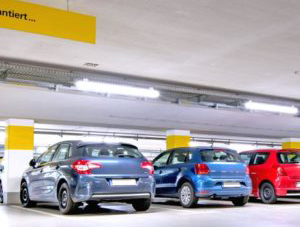The world’s population is constantly increasing, and with that, so too is the number of people on the road. With tens of millions of people on the go every day, especially those without access to reliable public transportation, it’s no wonder the demand for parking is constantly high.
In fact, many studies have suggested that parking facilities will experience a steady rise in demand as the years go by. For instance, in New York, an MTA study of the North White Plains Metro-North station’s parking garage predicts a roughly 25 percent increase in parking demand over the course of the next decade. With tens to hundreds of thousands of Westchester Country workers already relying on this garage for parking before they ride the train into Manhattan, increased demand puts further pressure on a set number of parking spaces.
The problem isn’t just limited to urban areas. With the U.S. population recent and continued growth — expected to top 400 million in the upcoming decades — more cars will be on the road than ever before. What’s more, unemployment in the U.S. is relatively low, at just 4.3 percent, putting many drivers on the road commuting to work every day. And this doesn’t even factor in the massive number of students driving to and from high schools and universities; the number of students has risen from 15 to 20 million in years past and is expected to keep growing.
Cities respond to this extensive demand for parking by charging for open spots, but this action in itself affects demand. Solutions exist to address what both governments and drivers need, all without altering the number of parking spaces available, even as more people hit the road.
The impacts of growing parking demand

It’s easy to visualize the consequences of excessive parking demand. Drivers circling parking lots and the space around them, heavy traffic on roads near parking, and that nagging feeling of having paid too much for convenient parking all come to mind. Governments know how to play with traffic to their profit; in New York City, for instance, the PARK Smart NYC system charges increased amounts for parking the longer a car remains parked in a space and prices parking highest during the busiest hours. This has students, workers and the general driving population asking: is it worth it to drive when, on top of gas, tolls, and monthly payments, parking is both scarce and expensive?
Rather than allowing potential drivers to flee due to high parking costs, cities might answer this question with innovative solutions. Atlanta’s government, for instance, manages its own parking agency that oversees all metered parking and even operates a customer service line during standard business hours. A built-in mobile app streamlines parking payments, but even this convenience likely won’t stop drivers from complaining that parking remains impossible to find.
What’s needed, then, is a way to direct drivers to open parking spaces in a way that pleases all drivers—workers, students, those just out on the town—without disrupting parking revenue.
Parking management systems for city and resident needs
Parking management systems can help drivers identify open spaces without building new parking facilities to satiate increased demand. Crowded parking decks will only grow in usage with time, and parking management systems can expertly pair open spots with drivers seeking them. This means less circling for parking—and therefore less traffic and even pollution—not just in the facility, but across the community.
Parking guidance systems are particularly apt for this situation; they simultaneously display which levels of a parking garage have spots open and direct drivers directly to these spots. Lights with vehicle detection technology are installed above each spot, feeding directly to the level display; these lights emit two colors, one for “occupied” and one for “vacant.” Gone are the days of wondering whether that opening between two larger vehicles is really a free spot or just a smaller, obscured vehicle; instead, the time between entering a garage and finding a spot is reduced.
What’s more, parking management systems ensure efficient use of an existent facility, which is far cheaper than building a new structure. Those profiting from parking have reason to administer parking management systems as well: with drivers newly confident in their ability to find parking, more drivers will park in conveniently placed paid spots rather than cheaper, farther away facilities. This solution is as practical for cities as it is for private businesses, all while benefiting drivers.
To properly address revenue needs and the constantly increasing demand for parking across all manner of drivers, parking management systems represent a way to take existing infrastructure and maximize its functionality. A properly implemented parking management system can ensure that both cities and their people have their needs met.

